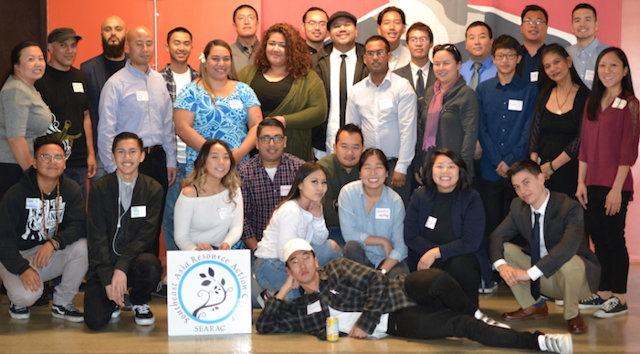
Fifty percent of Asian American and Pacific Islander youth have been bullied in school according to a California report.
The California Asian American and Pacific Islander Youth Report reveals that AAPI youth across diverse communities report high rates of bullying and discrimination, but youth from certain AAPI subgroups face significantly higher rates of economic insecurity and violence, and lack positive mental health supports to cope with these challenges.
The survey of AAPI youth gives a strong argument for disaggregation of data for Asian American and Pacific Islanders: Different AAPI communities suffer different problems. What affects one community might not be a problem for others.
The report “shines a light on and lifts up voices from communities who are not reflected in the ‘Asian’ categories on data dashboards, communities who have for too long been largely invisible in the eyes of schools and educators,” said Lailan Huen, program manager for Asian Pacific Islander Student Achievement at the Oakland Unified School District.
The report, produced by the nonprofit Southeast Asia Resource Action Center (SEARAC) and Asian American and Pacific Islander Coalition Helping Achieve Racial and Gender Equity (AAPI CHARGE) and released Thursday (June 6), is based on a 2016-17 survey of 813 Asian American and Pacific Islander youth and young adults, as well as five focus groups across California.
The survey found that 50 percent of Cambodian, Laotian and Iu Mien (a Southeast Asian ethnic minority) respondents said they have not taken classes about their culture, ethnic history and identity; 85 percent of Samoan respondents said they felt invisible and unrecognized because they haven’t seen their cultural identities represented in classes; and 50 percent of youth reported being bullied in school with stereotypes of their racial or ethnic identity.
Social workers conducted the survey because of problems that have arisen in California schools were mounting. While there were plenty of anecdotal evidence, they didn’t have the data to back up their arguments for more specific services.
In plainer terms, the model minority myth didn’t fit all the students.
“These smaller Asian American and Pacific Islander communities just do not have the visibility when it comes to their educational challenges,” said Gabriel Garcia, a coordinator at the Asian American and Pacific Islander Coalition Helping Achieve Racial and Gender Equity (AAPI CHARGE).
“So every step that we can take to bring visibility to these communities to their experiences in school will bring us closer to educational equity that we would be advocating for,” said Huan.
Stanley Pun — program manager at Oakland-based nonprofit AYPAL, which helped design the survey — said in an email that the findings are significant because, while the model minority myth may apply to certain groups of Asian Americans who have had generations to adjust to the United States, other communities struggle with trauma from events such as the Vietnam War, the Cambodian genocide and the legacy of colonialism in the Pacific Islands.
The report also found distinct regional trends. Fresno’s Hmong youth described feeling invisible or misunderstood at school, despite living in one of the largest Hmong communities in the country. Thirty-eight percent of Oakland respondents and 77% of Stockton respondents reported feeling unsafe in their neighborhoods, compared to one in four respondents overall.
Long-time Stockton community leader Sokha Kaz Lek remarked, “These kids are living in the modern-day Killing Fields. We need to find a way to stop the cycle of violence. We need to help our youth live in peace.”
The report offered several recommendations to address the findings, including developing ethnic studies curricula that reflect the diversity of Asian American and Pacific Islander communities, requiring faculty and staff to undergo training on diversity and inclusion, and implementing restorative and transformative justice models in schools to address bullying.
“We cannot continue with only universal programs and expect to reach our goals for equity, without giving students who need more access and support those resources to achieve standards and thrive,” said Huan.
AsAmNews has Asian America in its heart. We’re an all-volunteer effort of dedicated staff and interns. Check out our Twitter feed and Facebook page for more content. Please consider interning, joining our staff or submitting a story

